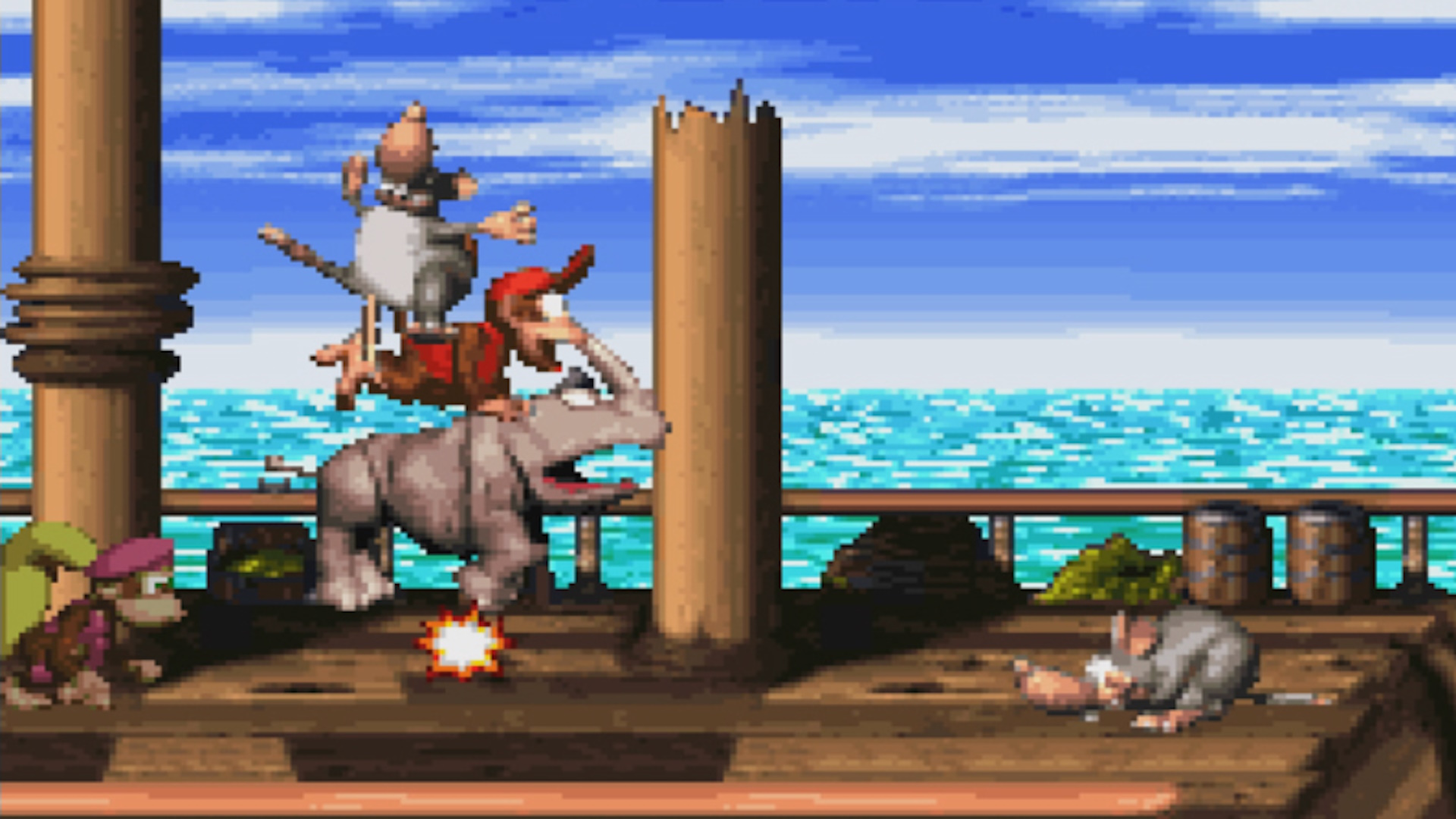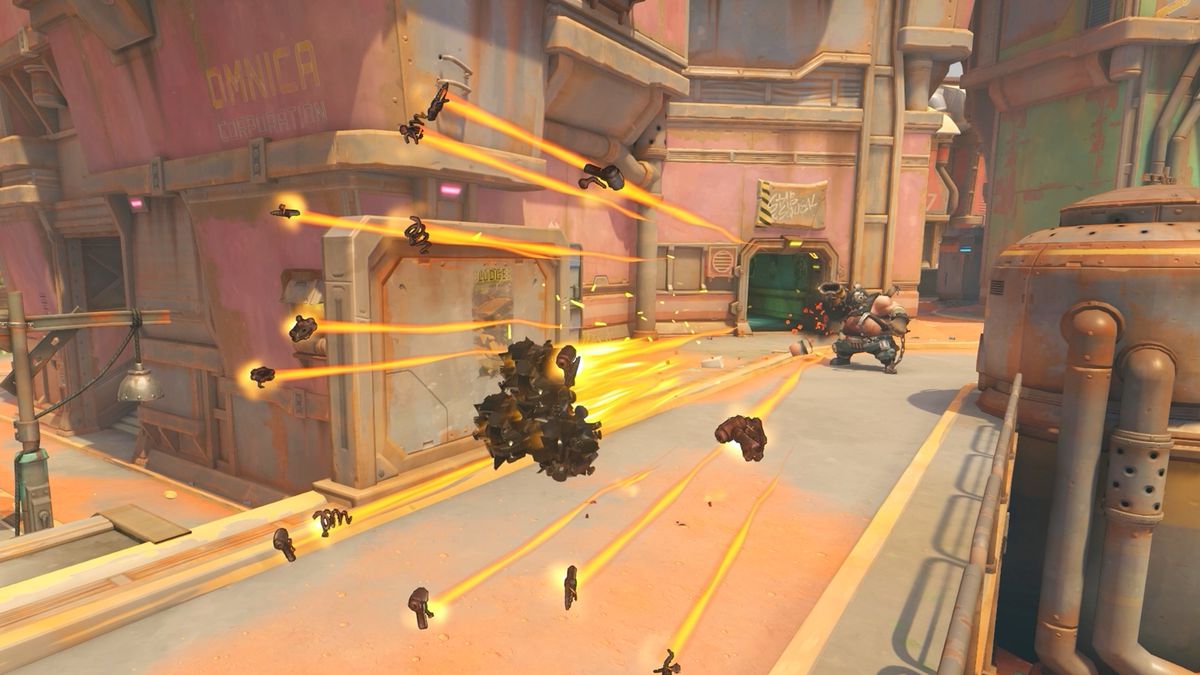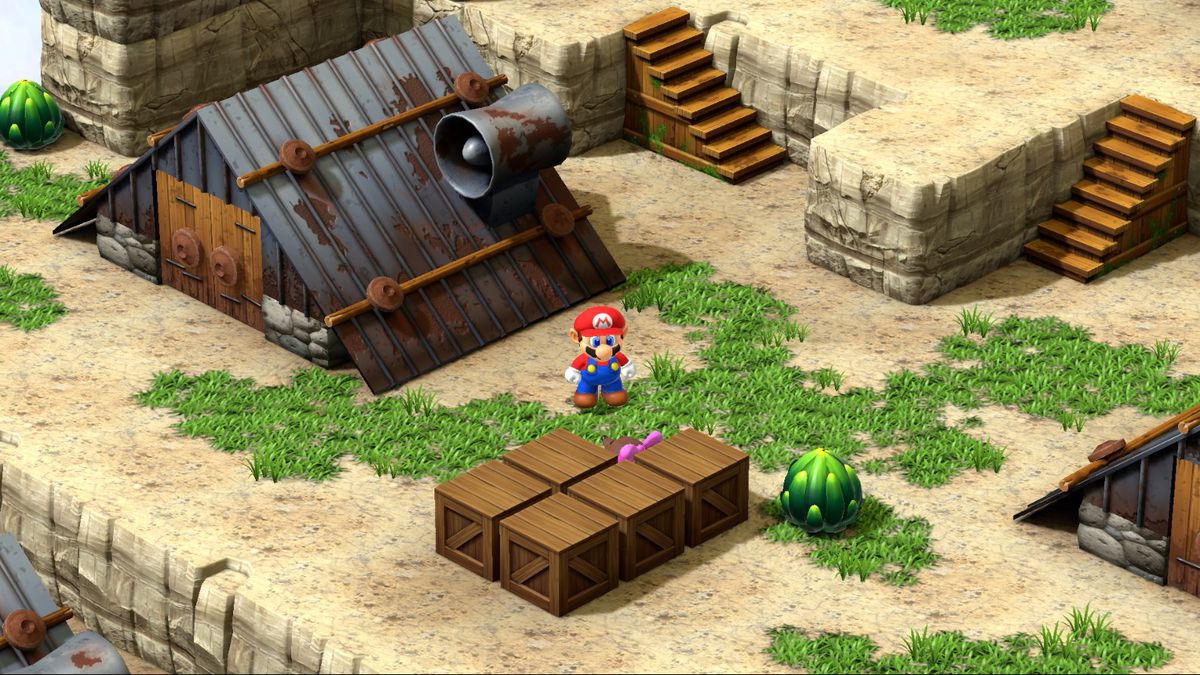Nearly three decades after it was first released on Super Nintendo — and despite a handsome remake for Switch, with completely redone visuals and rerecorded music — there’s still something strangely, but not unpleasantly, off about Super Mario RPG.
Mario looks all squat and cross-eyed; in fact, the whole Mushroom Kingdom and all its denizens have a sort of squashed, funhouse-mirror look, as if folding them into an isometric perspective has flattened them all out. Early in the game, Bowser’s castle gets run through by a giant, skyscraper-sized talking sword; when did you ever see a sword in a Mario game? Not long after, a Toad makes a joke about forgetting his bazooka at home. His what? Mario’s house is a wobbly, clapboard shack. Mario has a house. It’s all kinds of wrong.
This adventure, first released in 1996 as Super Mario RPG: Legend of the Seven Stars, was a collaboration between Nintendo and Square (now Square Enix) when both were in their mid-’90s pomp. Nintendo was winding down the SNES after an unbeatable run of in-house classics, from Super Mario World to Yoshi’s Island, while Square was months away from unleashing Final Fantasy 7 on the world. It was a meeting of near equals, and while the characters were Nintendo’s, the turf — turn-based role-playing games — was very much Square’s. The developer had the confidence to make its own tastes and personality felt in Mario RPG, in much the same way it later would with the Disney-crossover Kingdom Hearts games, and in a way few external developers working with Mario ever would again (with the recent exception of Ubisoft’s zany-but-cunning Mario + Rabbids games).
:no_upscale()/cdn.vox-cdn.com/uploads/chorus_asset/file/25049844/Switch_SuperMarioRPG_scrn_12_png_jpgcopy.jpg)
So Mario RPG features many elements that feel like foreign bodies, even within the hallucinatory, anything-goes world of the Mushroom Kingdom. Square was allowed to create its own characters for the game — including Mallow, Mario’s first companion on his quest, who claims to be a frog but looks like a cross between a cloud and a cauliflower with stripy pants and a purple quiff. There’s a lovely score by the legendary Yoko Shimomura (Kingdom Hearts, Street Fighter 2) that has a lush, nostalgic quality that’s subtly but profoundly different from original Mario composer Koji Kondo’s folksy melodic playfulness.
It all adds up to a curio: a game that has long felt like it belongs in a parallel dimension. Released just months before the Nintendo 64’s debut, original SNES copies of Super Mario RPG command high prices on the used market, and it has had only basic and sparing reissues from Nintendo since (it didn’t come to Europe at all until the Wii Virtual Console version in 2008). But it was also influential, laying the foundations for Nintendo’s later (and more tonally controlled) Mario RPG series, Paper Mario and Mario & Luigi. It has the same streamlined RPG systems as those games, the rhythmic inputs that add immediacy to the turn-based combat, and a similar, mildly meta sense of humor.
:no_upscale()/cdn.vox-cdn.com/uploads/chorus_asset/file/25049850/Switch_SuperMarioRPG_scrn_06.jpg)
For whatever reason — perhaps a hunger for any and all Mario content in the wake of the Super Mario Bros. Movie phenomenon, perhaps a newfound willingness to take risks with its mascot — Nintendo is now finally ready to give Super Mario RPG its due and integrate it properly with the Mario catalog, via this full Switch remake. It’s strange to encounter this game (for the first time, in my case) in 2023 on Switch, and it’s great that Nintendo, Square Enix, and whoever developed the remake (which remains unclear, but I’ve asked Nintendo for clarification) have so carefully kept its wayward spirit alive.
The full 3D graphical overhaul retains the original’s bizarre rendered look, wisely refusing to homogenize or standardize the designs, and retaining its off-kilter character even as it smooths out the animations. Shimomura has completely reorchestrated her score, but you can switch to the chiptune originals, if you like. There are some modern creature comforts, like a frequent autosave, but most of Mario RPG’s archaic, 27-year-old design quirks remain intact. That said, on early evidence, Square’s expert simplification of traditional RPG mechanics seems bulletproof — and the game plays very swiftly, considering its age.
As smart as the new version is, playing Super Mario RPG feels like a portal to another time — or another timeline, perhaps. A timeline where Mario lives in a shack. I’m still not over it.
Super Mario RPG will be released on Nov. 17.






